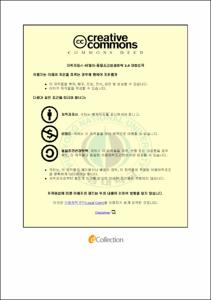In vitro anti-diabetic and anti-diabetic complications of Crataegus pinnatifida.
- Abstract
- Abstract
Crataegus pinnatifida Bge. known as Chinese hawthorn or Shanzha belongs to the family Rosaceae, is widely distributed throughout the northern temperate regions of the world with approximately 280 species, primarily in East Asia, Europe and North America. Traditionally, preparations of leaves and fruits of C. pinnatifida have been used in the treatment of chronic heart failure, high blood pressure, digestive disorders, arrhythmia, and arteriosclerosis. Currently, the fruits of C. pinnatifida have drawn much attention in the field of food, nutraceuticals, and medicine because of its widely reported health benefits, such as lipid lowering activity, antioxidative, free radical scavenging, anti-inflammatory, vasorelaxating, and hypolipidemic effects attributed to its high contents of polyphenols, flavonoids, procyanidines as well as triterpenes. The present study investigated the anti-diabetic potential of the MeOH extract as well as its different solvent soluble fractions of the fruits of C. pinnatifida via α-glucosidase, protein tyrosine phosphatase 1B (PTP 1B), rat lens aldose reductase (RLAR) and advanced glycation end products (AGEs) formation inhibitory assays. The MeOH extract showed potent inhibitory activity against α-glucosidase, PTP 1B, and AGEs formation with IC50 values of 122.11, 3.66 and 65.83 μg/mL, respectively, while it showed moderate inhibitory activity against RLAR with an IC50 value of 160.54 μg/mL. Among the tested fractions, the ethyl acetate (EtOAc) fraction exhibited highest α-glucosidase, PTP 1B and RLAR inhibitory activity with corresponding IC50 values of 22.70, 1.41 and 9.09 μg/mL while dichloromethane (CH2Cl2) fraction showed the highest AGEs formation inhibitory activity with an IC50 value of 80.53 μg/mL. Moreover, CH2Cl2 fraction also showed good inhibitory activity against α-glucosidase and PTP 1B inhibitory assays with IC50 values of 45.86 and 13.32 μg/mL, respectively. Besides, n-butanol (n-BuOH) fraction exhibited moderate PTP 1B and RLAR inhibitory activity with IC50 values of 18.75 and 68.60 μg/mL, respectively. In contrast, the water (H2O) fraction showed inhibitory activity only against PTP 1B with IC50 value of 15.84 μg/mL. In order to isolate compounds from two active fractions, the CH2Cl2 fraction and EtOAc fractions were subjected to repeated column chromatography. Repeated column chromatography of the EtOAc fraction yielded hyperoside and chlorogenic acid while CH2Cl2 fraction yielded three triterpenic acid including ursolic acid, oleanolic acid and 3-epicorosolic acid along with β-sitosterol and β-sitosterol glucoside. Among the compounds, 3-epicorosolic acid has been isolated first time from the fruits of C. pinnatifda. Since all the compounds except 3-epicorosolic acid and their bioactivities are already reported we selected 3-epicorosolic acid for further investigation. 3-Epicorosolic acid showed potent α-glucosidase inhibitory activity with IC50 value 30.18 μg/mL (63.84 μM) compared to the positive control acarbose with an IC50 value of 92.8 μg/mL (143.74 μM). On the other hand, it also exhibited potent PTP 1B inhibitory activity with an IC50 value of 4.08 μg/mL (8.63 μM) compared to the positive control ursolic acid with an IC50 value of 1.17 μg/mL (2.56 μM). Moreover, kinetic study revealed that 3-epicorosolic acid showed mixed type inhibition against PTP 1B while it showed uncompetitive inhibition against α-glucosidase. Therefore, potential anti-diabetic activity of the fruits of C. pinnatifida is possibly attributed to the presence of flavonoids as well as triterpenes which might be used as functional food for the treatment of diabetes and diabetes related complications. Moreover, 3-epicorosolic acid showed very strong inhibitory activity against both α-glucosidase and PTP 1B which could be explored further in order to develop therapeutic agents for the treatment of type 2 diabetes mellitus.
- Issued Date
- 2012
- Awarded Date
- 2012. 8
- Type
- Dissertation
- Publisher
- Pukyong National University
- Affiliation
- 부경대학교 대학원
- Department
- 대학원 식품생명과학과
- Advisor
- Jae Sue Choi
- Table Of Contents
- Table of Contents
Abstract------------------------------------------------------------------------------viii
I. Introduction-------------------------------------------------------------------------1
II. Materials and Methods----------------------------------------------------------13
1. Plant materials-----------------------------------------------------------------13
2. Reagents and equipments----------------------------------------------------13
2-1. Reagents------------------------------------------------------------------13
2-2. Equipments---------------------------------------------------------------14
3. Methods------------------------------------------------------------------------15
3-1. Extraction and fractionation--------------------------------------------15
3-2. Isolation of the active compounds from CH2Cl2 and EtOAc fraction------------------- ------------------------------------------------------17
3-3. α- Glucosidase inhibitory assay --------------------------------------28
3-4. Protein tyrosine phosphatase 1B inhibitory assay -----------------29
3-5. Rat lens aldose reductase inhibitory assay --------------------------30
3-6. Advanced glycation end products formation inhibitory assay ----31
3-7. Kinetic parameters of 3-epicorosolic acid for two types of enzymatic inhibition -------------------------------------------------------- 32
III. Results---------------------------------------------------------------------------34
1. α- Glucosidase inhibitory activity of the extract and different fractions from C. pinnatifida ---------------------------------------------------------34
2. PTP 1B inhibitory activity of the extract and different fractions from C. pinnatifida ----------------------------------------------------------------36
3. RLAR inhibitory activity of the extract and different fractions from C. pinnatifida ----------------------------------------------------------------39
4. AGEs formation inhibitory activity of the extract and different fractions from C. pinnatifida --------------------------------------------41
5. Isolation of active compounds from EtOAc fraction-------------------44
6. α-Glucosidase and PTP 1B inhibitory activity of 3-epicorosolic acid -----------------------------------------------------------------------------------46
7. Kinetics parameters of 3-epicorosolic acid------------------------------50
Ⅳ. Discussion-----------------------------------------------------------------------53
Ⅴ. Conclusion-----------------------------------------------------------------------62
Ⅵ. References-----------------------------------------------------------------------63
- Degree
- Master
- Files in This Item:
-
-
Download
 In vitro anti-diabetic and anti-diabetic complications of Crataegus pinnatifida..pdf
기타 데이터 / 1.54 MB / Adobe PDF
In vitro anti-diabetic and anti-diabetic complications of Crataegus pinnatifida..pdf
기타 데이터 / 1.54 MB / Adobe PDF
-
Items in Repository are protected by copyright, with all rights reserved, unless otherwise indicated.